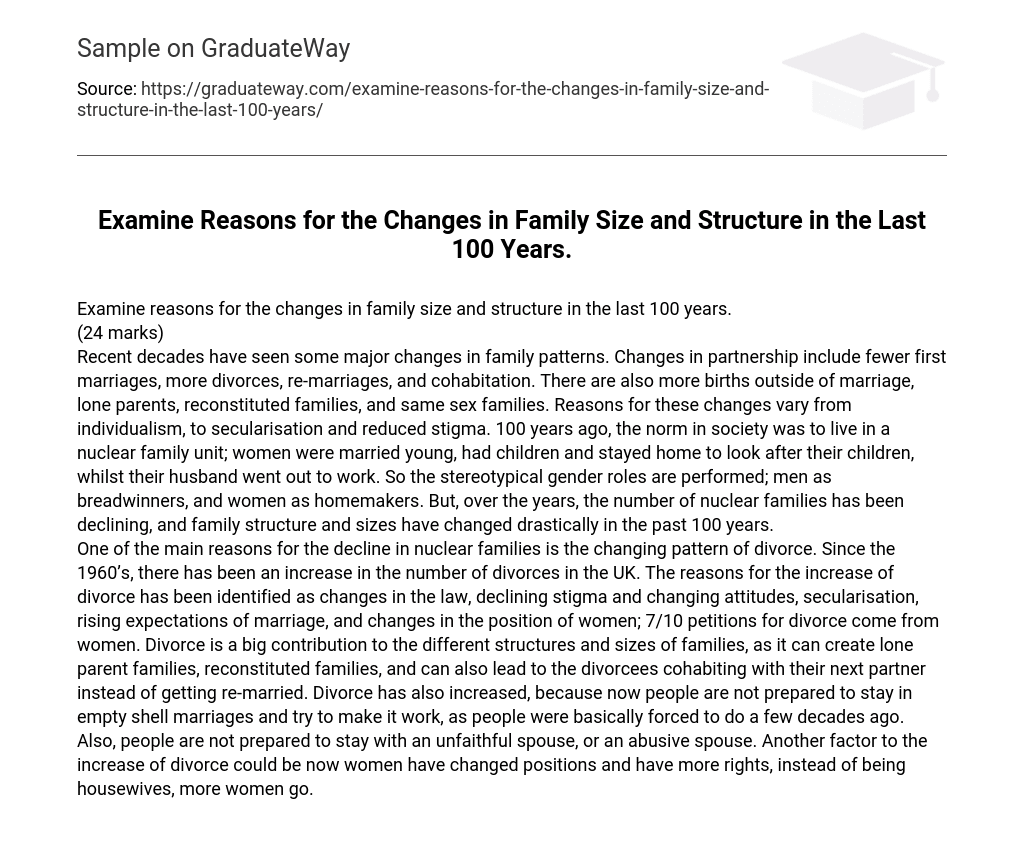Examine reasons for the changes in family size and structure in the last 100 years.
(24 marks)
Recent decades have seen some major changes in family patterns. Changes in partnership include fewer first marriages, more divorces, re-marriages, and cohabitation. There are also more births outside of marriage, lone parents, reconstituted families, and same sex families. Reasons for these changes vary from individualism, to secularisation and reduced stigma.
100 years ago, the norm in society was to live in a nuclear family unit; women were married young, had children and stayed home to look after their children, whilst their husband went out to work. So the stereotypical gender roles are performed; men as breadwinners, and women as homemakers. But, over the years, the number of nuclear families has been declining, and family structure and sizes have changed drastically in the past 100 years.
One of the main reasons for the decline in nuclear families is the changing pattern of divorce. Since the 1960’s, there has been an increase in the number of divorces in the UK. The reasons for the increase of divorce has been identified as changes in the law, declining stigma and changing attitudes, secularisation, rising expectations of marriage, and changes in the position of women; 7/10 petitions for divorce come from women. Divorce is a big contribution to the different structures and sizes of families, as it can create lone parent families, reconstituted families, and can also lead to the divorcees cohabiting with their next partner instead of getting re-married.
Divorce has also increased, because now people are not prepared to stay in empty shell marriages and try to make it work, as people were basically forced to do a few decades ago. Also, people are not prepared to stay with an unfaithful spouse, or an abusive spouse. Another factor to the increase of divorce could be now women have changed positions and have more rights, instead of being housewives, more women go.





